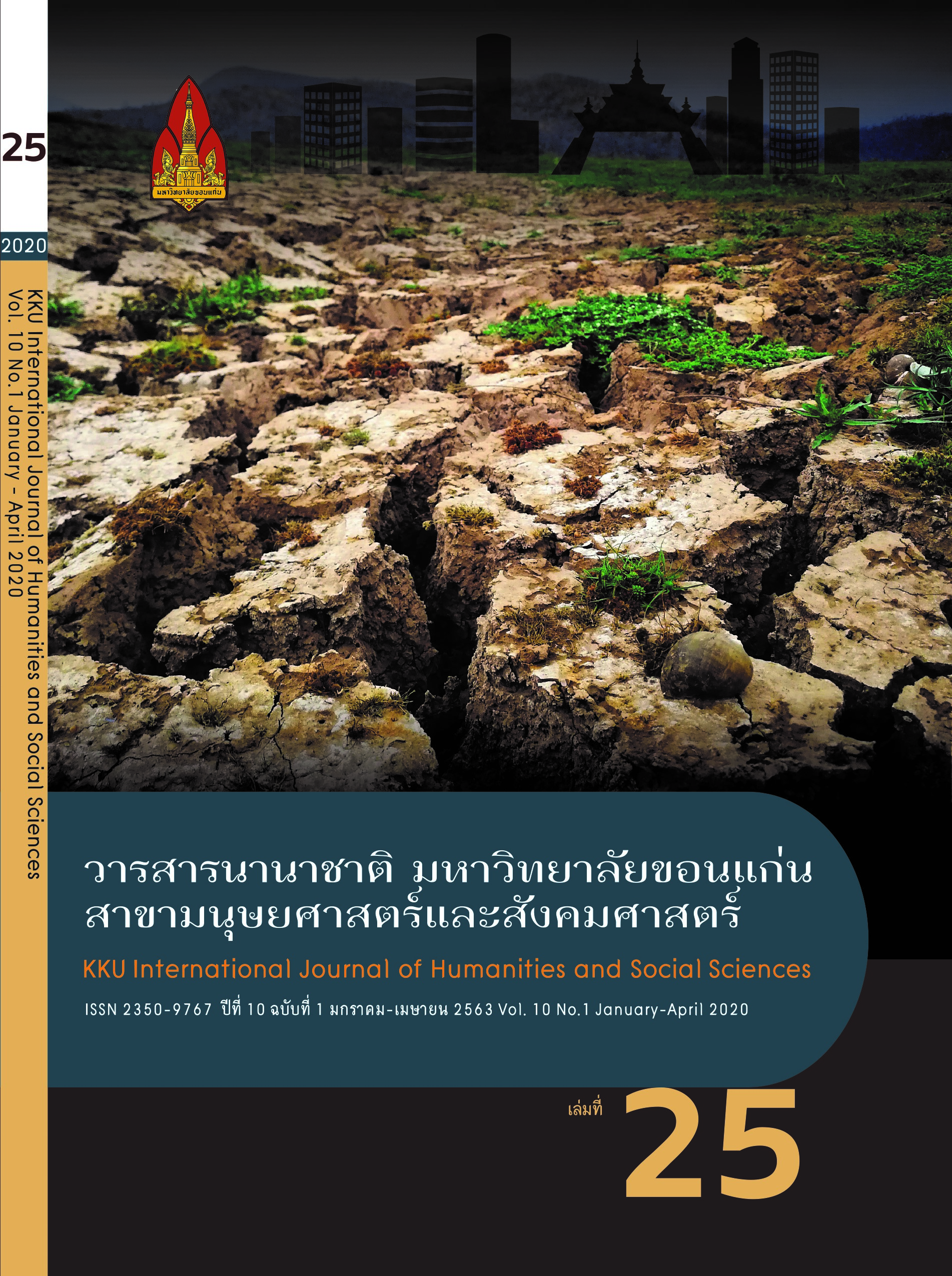Knowledge: Influence on Decision making process regarding the matter of Vetiver grass Innovation in Landslide Hazard Area
Main Article Content
Abstract
This research aims to study the effect of knowledge on decision to accept the Vetiver system innovation in landslide hazard area by using a Quantitative research technique in a landslide hazard area. The research focused on 383 farmer households in Huai Kayeng, Thong Pha Phum, Kanchanaburi. The research shows the knowledge of Vetiver grass does affect a decision-making process of Deciding, Applying and Confirming the usage of Vetiver grass to prevent landslide in agricultural land. The research suggests that to in order to help advancing the usage of Vetiver grass to prevent landslide in agricultural land. It is beneficial to build knowledge, viewpoint and understanding about diverse features of Vetiver grass that contributes in preventing landslide.
Article Details
References
Chamnan D. (2007) Adoption of vetiver grass usage for soil and water conservation by farmers in Surin Province. Master of Agriculture: Sukhothai Thammathirat Open University.
Chuakuna U. (2012). Factor affecting the adoption of vetiver in farmlands under different socio-geographical condition. Master of Science Program in Resource Management : Kasetsart University.
Department of Mineral Resources. (2011). Kanchanaburi Geohazard Surveillance Organization. Bangkok: Environmental Geology Division.
Intuwong G. (2015). Technology Transfer for Adoption of Social Innovation. Academic Journal Uttaradit Rajabhat University. 10 (2), 1-10.
Land Development Department. (2015). Land development guideline for Volunteer soil doctor and farmer. Bangkok: Research and Development for Land Management Division.
Lewis L. (2000). Soil Bioengineering An Alternative for Roadside Management A Practical Guide. Retrieved August 9, 2019 from https://www.wsdot.wa.gov/publications/fulltext/ Roadside/SoilBioEng.pdf
Office of the Royal Development Projects Board. (1993). Master plan on Development and campaigning of the Royal Initiative Vetiver Project Application. Retrieved August 9, 2019 from http://thvn.rdpb.go.th/Files/Plan/5-ilovepdf-compressed.pdf
Rogers, E. M. and F. Shoemaker. (1971). Communication of Innovations : A cross Cultural Approach. New York : The Free Press.
Suarau O. and Oreva A. (2017). Vetiver Grass: A Tool for Sustainable Agriculture. Retrieved August 28, 2019 from https://cdn.intechopen.com/pdfs/55730.pdf.
Terefe, T. (2011). Farmers’ Perception on the Role of Vetiver Grass in Soil and Water Conservation in South Western Ethiopia. Retrieved May 10, 2019 from https://www.vetiver.org/ETH_Talube.
Truong, P., Tan Van, T., & Pinners, E. (2008). Vetiver system applications. United States: The Free Press.
Wang, Y., & Ruhe, G. (2007). The Cognitive Process of Decision Making. Retrieved August 28, 2019 from https://pdfs.semanticscholar.org/7d63/1e6580dbd4dc92a3e12f29fb3f2a50651537.pdf
Xu, L. (2009). Application and Development of the Vetiver System in China: 20 Year Experience Retrospection. Bangkok: Office of the Royal Development Projects Board.


